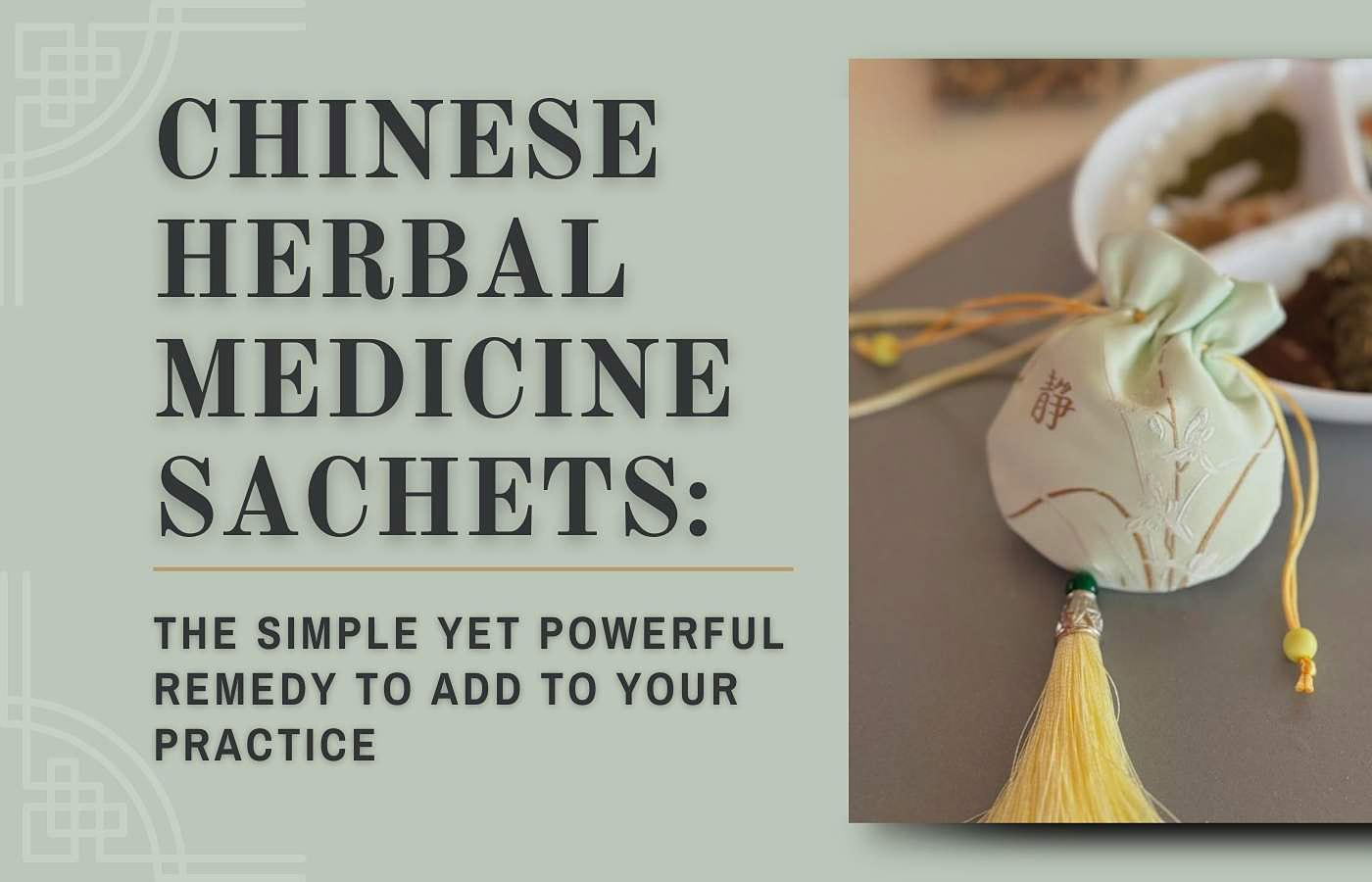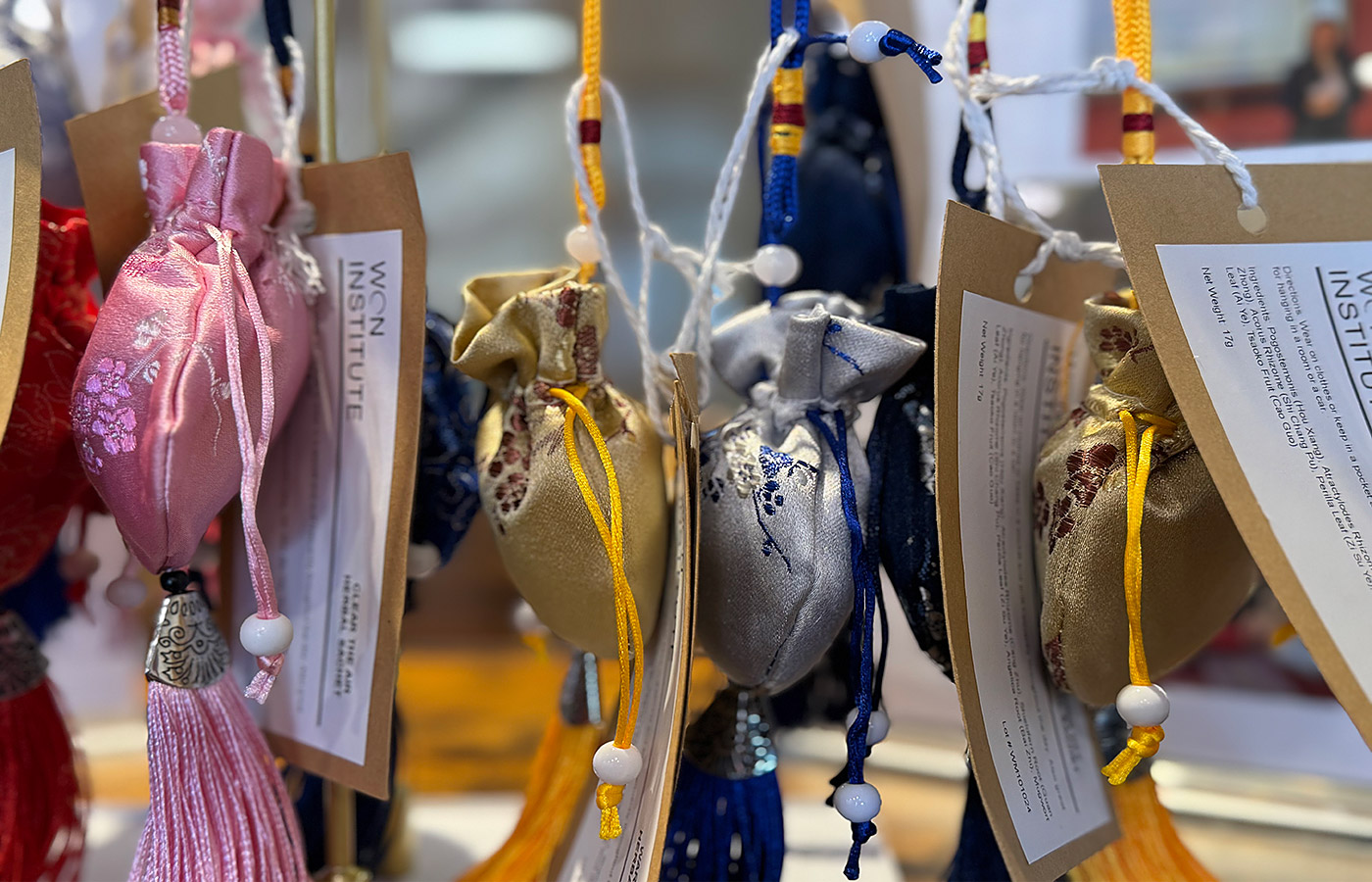
Chinese Herbal Medicine Sachets:
The Simple Yet Powerful Remedy To Add To Your Practice
Have you ever considered that the key to improving patient care could be right under your nose?
Aromatic Chinese medicine has been used to fight pestilence for thousands of years. The use of traditional Chinese medicine with a fragrant smell is also known as Aromatherapy. According to the History of Chinese epidemic disease, from the Western Han Dynasty to the late Qing Dynasty, there were at least 300 large-scale plagues in China successively in more than 2000 years. Practitioners used all the tools at their disposal during this timeframe and developed Aromatherapy to combat these plagues.
Aromatherapy of traditional Chinese medicine includes moxibustion, a pillow with medicine, wearing an herbal sachet, donning a medicine belly pocket, acupoint sticking, medicine bath, foot soak, incense, etc. This treatment works through several mechanisms: the aromatic herbal formulas directly contact the skin, allowing the absorption of active ingredients; the substances stimulate meridians and acupoints; volatile compounds are absorbed through the mucosa of the head and face; or they stimulate the blood vessels and nerves in the mucosa of the eyes, ears, and nose.
Chinese herbal medicine satchels, often referred to as "medicinal sachets" or "herbal pouches," have been a fundamental component of traditional Chinese medicine (TCM) for millennia. For acupuncturists and herbalists, these sachets offer a unique, non-invasive modality to support patient well-being through the therapeutic properties of carefully selected herbs.
Historical Context in TCM
Herbal sachets have long been utilized in TCM to protect against seasonal illnesses and to harmonize the body's qi. Worn around the neck or placed in living spaces, they have traditionally been employed to ward off pathogenic factors, particularly during transitions between seasons. Their use during festivals, such as the Dragon Boat Festival, further illustrates their cultural and medicinal significance.
The earliest literary record of the method of sachet prevention from epidemic diseases can be found in the pre-Qin Dynasty literature, The Classic of Mountains and Seas. In this book, it was recorded that fumigation herbs could prevent epidemics. For example, Sun Simiao records wearing herbal bags for epidemic prevention in his book Beiji Qianjin Yaofang. It was recorded that taiyi liujin powder was hung in front of the heart to ward off external evils.
Herbal Formulations and Ingredients
For practitioners, formulating herbal sachets requires understanding the properties and synergies of various herbs. Commonly included herbs and their TCM benefits are:
- Ai Ye - Mugwort (Artemisia argyi): Dispels dampness and cold and is frequently used in moxibustion.
- Bo He - Peppermint (Mentha): Clears heat and alleviates discomfort from wind-heat invasions.
- Rou Gui - Cinnamon (Cinnamomum cortex): Warms the meridians and promotes the flow of qi and blood.
- Guang Huo Xiang - Patchouli (Pogostemon cablin): Transforms dampness and harmonizes the middle jiao.
- Ding Xiang - Cloves (Syzygium aromaticum): Strengthens yang and dispels internal cold.
Each herbal combination can be tailored to the patient's specific needs, aligning with TCM principles of individualized care.
Application During the COVID-19 Pandemic
During the COVID-19 pandemic, Chinese herbal medicine sachets were prominently used as an adjunct preventive measure. TCM practitioners developed specific formulations believed to fortify the immune system and provide a barrier against the virus. A notable blend used during this time included:
- Bai Zhu - Atractylodes (Atractylodes lancea): Strengthens the spleen and expels dampness, supporting overall immune function.
- Huo Xiang—Agastache (Agastache rugosa): This herb clears summer heat and resolves dampness, particularly useful in respiratory conditions.
- Guang Huo Xiang - Patchouli (Pogostemon cablin): Known for its antiviral and antibacterial properties, enhancing the body's natural defenses. Studies have found that patchouli can increase the concentration of IgG, IgM, and IgA in serum immunoglobulin, regulate the level of inflammatory factors in serum, and reduce pulmonary inflammation.
These sachets were widely adopted in clinics and public spaces, reinforcing the TCM preventive care approach.
Clinical Benefits and Usage
For acupuncturists and herbalists, herbal sachets offer a practical tool to complement treatments. Key benefits include:
- Aromatherapeutic Effects: The volatile oils released by the herbs can calm the heart, reduce stress, and promote relaxation, enhancing the efficacy of acupuncture treatments.
- Preventive Health: Sachets serve as a simple, daily preventive measure, helping patients maintain health and ward off environmental pathogens.
- Patient Empowerment: Encouraging patients to use herbal sachets fosters a sense of participation in their health maintenance, aligning with holistic care principles.
Practical Considerations
Herbal sachets are easy to prepare, making them an excellent addition to a practitioner's toolkit. The process involves selecting and drying appropriate herbs placed directly into breathable fabric pouches. It's important to emphasize to patients that these sachets are for external use only and should not be ingested. Herbal sachets are also not recommended for pregnant women.
Integrating Sachets into Practice
For modern TCM practitioners, herbal sachets offer a versatile, non-invasive option to enhance patient care. They can be provided as part of a treatment plan or as a take-home adjunct to support ongoing health maintenance. Additionally, they serve as a gateway for introducing patients to the broader benefits of herbal medicine and acupuncture.
Simple Recipe to Make Your Own Clear the Air Sachet
Combine Bo He, Ai Ye, Guang Huo Xiang, Zi Su Ye, and Jing Jie in a pouch; it is just that simple!
Conclusion
Chinese herbal medicine sachets remain a valuable component of TCM, offering acupuncturists and herbalists a means to extend care beyond the treatment room. Their notable resurgence during the COVID-19 pandemic underscores their relevance in contemporary health challenges. Easy to make, safe for external use, and deeply rooted in TCM principles, herbal satchels are a simple yet powerful tool for holistic health and preventive care in modern practice.
Won Institute of Graduate Studies Clinics and Herbal Dispensary offers a wide selection of pharmaceutical-grade raw herbs, granule singles, granule formulas, and a few formulas in tablets, capsules, or tea pills. The dispensary also offers an expanding selection of topical products, including liniments, balms, medicated oils, and foot soaks.
Visit our Chinese Herbal Medicine Clinic
